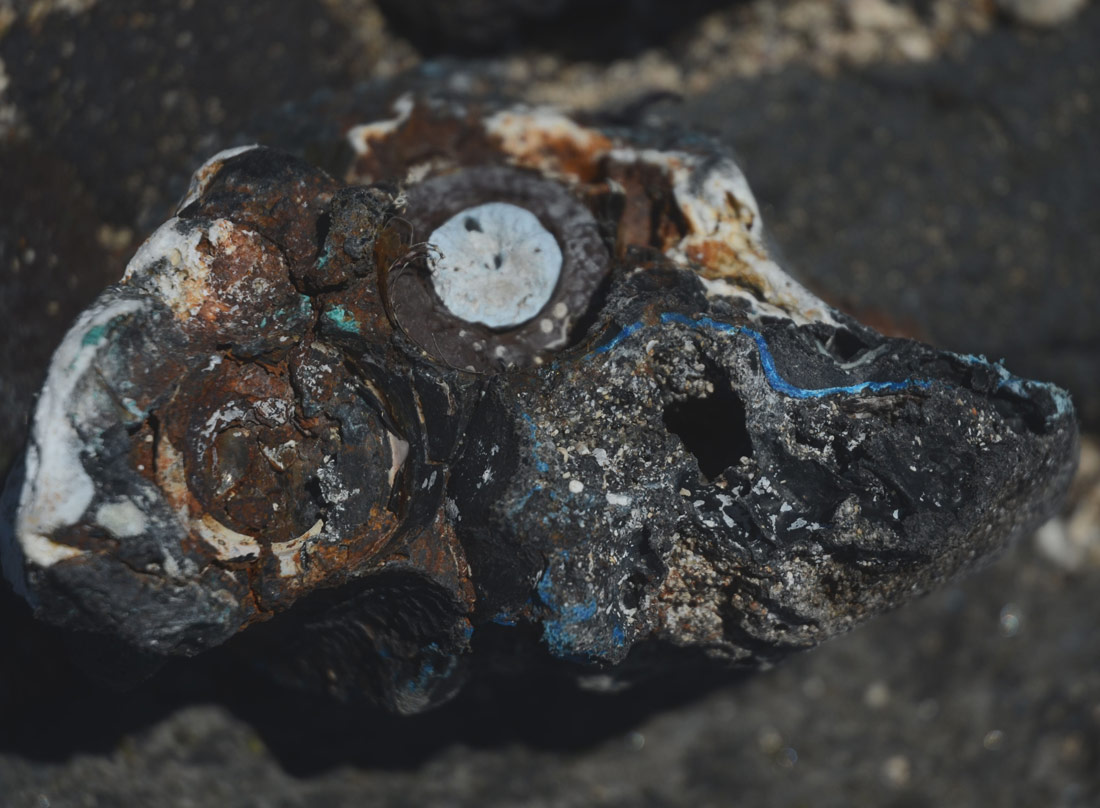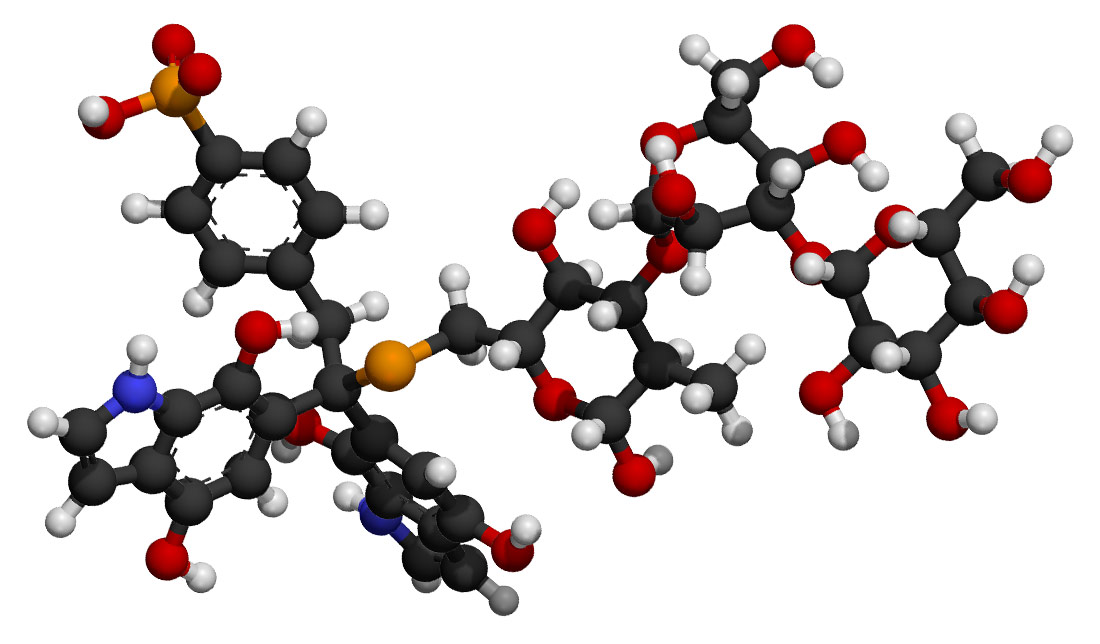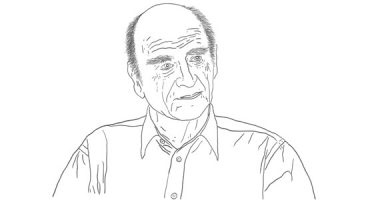
A crowd of visitors looking at the lunar sample on exhibit in the Rotunda of the Arts and Industries Building . Nova York, 1970 | Smithsonian Institution Archives | No known copyright restrictions
According to Timothy Morton, Nature is a concept proposed from an anthropocentric viewpoint, therefore it is not relevant for talking about ecology. Taking Nature out of the equation involves rethinking the distinction between the artificial (human) and the natural (non-human). Recent scientific discoveries, such as biominerals and plastiglomerates, also jeopardises this divide. These new materials suggest a new twist in the relation between human activity and matter, and they make the ghost of ecological catastrophe even more visible.
The cartographers of antiquity drew dragons and other mythological creatures on the unexplored areas of their maps. These monsters appeared as a symbol of danger and, in general, of the unknown. In today’s world, so extensively mapped, these symbols have ceased to have any meaning on maps but they remain alive in other disciplines. Physics and cosmology today take charge of mapping the world at another level: that of the composition of things, of the origin of matter, of the behaviour of space-time. And it is in these explanations, in these maps as incomplete as those of the navigators of ancient times, where new monsters appear. Not in the form of dragons, nor of giants, but of dark matter, black holes, dark energy, wormholes, multiverses, of cats that are neither dead nor alive, of antimatter and other constructions that, from the rational and empirical stance, evoke all kinds of supernatural imagery and play a role similar to that of the monsters of the past. They are our monsters now. Objects capable of spaghettifying us (a real term used in cosmology since the 1970s) if we get too close. Matter so exotic and mysterious that we can hardly even detect it. Mythological creatures through and through.
Thiotimoline is a peculiar chemical compound with endochronic properties, which means that it dissolves 1.12 seconds before it makes contact with water. This unusual process takes place thanks to two main characteristics: the first is the fact that a molecule of thiotimoline contains one atom of carbon with two chemical bonds that operate in a different space-time plane. And the second, and most important, is that it is a fictitious chemical compound, invented by Isaac Asimov in 1947. Asimov’s thiotimoline was the main subject of various scientific-looking papers published in science-fiction magazines of the time, but it also found its way into his own PhD thesis in chemistry at the University of Columbia, in a small act of poetic sabotage that received the approval of academia. This friendly mythological creature is an exercise in what we could call contemplative synthesis: made up combinations of components, processes and elements that have never existed in a laboratory, despite the enthusiasm that they sparked in the late 1940s among chemistry students in the state of New York.
Synthesis and symbolism
An example of synthesis as peculiar as that of Asimov invites us to reconsider some of the basic pillars of our way of understanding the world. Beyond the distinction between the real and the imaginary, thiotimoline’s invisible finger, like that of all synthetic compounds, points towards the natural-artificial binomial. Asimov never made thiotimoline a reality beyond his tales, but the synthesis of organic products has been a common practice for centuries. Why, therefore, do we continue separating them conceptually from those created uncontrolledly outside the laboratory walls? The linguistic trap of the natural-artificial binomial is founded, commonly, on the belief that things of human origin belong to the category of the artificial, whereas the rest fall under the umbrella of the natural, thus granting a special licence to the universe to synthesise things (elements, molecules, chemical compounds, bananas, and galaxies). What is the difference between Vitamin C from a wild orange and synthesised ascorbic acid? (Apparently none, but my ignorance in chemistry could be deceiving me). Why do we continue conferring such a strong symbolic charge to these categories? Ted Sider says that our species deals with the concept of island because we are not amphibians. That if the medium were not such a strong determining factor for our physiology and we could transition from being under water to walking 5000 metres above sea level without a hiccup, perhaps we would never have even developed the concept of island, because the variations in terrain between the ocean bed and the mountain peak would be continuous, regardless of the medium.
Separating the artificial and the natural means separating ourselves from the Other, but it is also a reminder of a certain symbolic legacy with quasi-religious connotations. What we call Nature, as a substitute for a deity, enjoys privileges and powers that merit a different label when they are part of our bag of tricks. It doesn’t matter how, when or for what purpose a process of synthesis takes place, what determines its category is usually its origin, human or non-human. Plants convert sunlight into food, but this synthetic process is broadly considered natural. Producing and editing DNA in a laboratory, in contrast, generates never-ending debates about ethics (see CRISPR). Eliminating this distinction without consideration does not solve the problem either. As Timothy Morton pointed out in our conversation a few months ago: “when everything is artificial, it’s impossible to maintain this distinction between Nature and artifice, so you have to do something with the notion of artifice there, and you can’t simply imagine that it means something like “illusion” or “construct” that makes sense from the point of view of some other entity”.
A new mineral concept
In January 2005, at the Mineralogical Society Winter Conference in Bath, UK, geologist Catherine W. Skinner proposed a breakthrough idea, which she had already discussed in an article (titled “Biominerals”) in Mineralogical Magazine. According to Skinner’s definition, biominerals are inorganic solids created by the metabolic activity of organisms. Stones created by living creatures. This activity, with an history of roughly 500 million years, includes all kinds of examples derived from the process of hardening of soft tissues until they become mineralised substances, from silicates generated by marine algae to the shells of invertebrates or copper nanoparticles created by bacteria. But Skinner’s contribution does something more than provide a conceptual framework for the origin and function of these inorganic solids – it also obliges us to expand the very notion of “mineral”. Thus, with the entrance of this idea into the field of mineralogy, the range of conditions for the creation of minerals, or for what we consider to be minerals, is drastically deformed and is no longer exclusive to geological processes, but also includes the activity of all kinds of life forms.
Despite all this, even here, the natural-artificial divide, the distinction between human and non-human life forms, comes into play. Again, it seems that the byproduct of human activity is subject to a radically different categorisation, as evidenced by so-called plastiglomerates. Discovered a relatively short time ago (extremely short in geological terms), plastiglomerates are minerals formed by the interaction of fragments of melted plastic, beach sediments, fragments of basalt lava and inorganic residues at high temperatures, giving rise to a completely new product, the direct consequence of human pollution on the planet. For some time marine biologists have warned about the way in which the billions of fragments of plastic deposited in the planet’s oceans are affecting marine life, but the discovery by Patricia L. Corcoran, Charles J. Moore and Kelly Jazvac (initially at Kamilo Beach on the island of Hawaii, but later confirmed on beaches around the planet) brought this causal chain to the world of rocks.

A sample of plastiglomerate, collected on Kamilo Beach in Hawaii | Patricia Corcoran
Hydrocarbon cycles
Plastiglomerates are the umpteenth milestone of the Anthropocene. The umpteenth reminder of the deep and amorphous footprint of the Capitalocene on the Earth’s biophysical system. Rocks synthesised involuntarily as an immediate consequence of human petrochemical activity. Biominerals through and through (despite the fact that they are not officially considered as such, for some reason that completely escapes me). Full-fledged monsters, that need no science-fiction geniuses nor imaginative cartographers, because they belong to the world of the gruesomely real. Plastiglomerates are a sick joke about the cycles of matter, never completely destroyed but transformed over geological eras: phytoplankton and zooplankton decomposed millions of years back, converted into what we named fossil fuels, converted in turn into plastics for our everyday logistics, which in less than a century have given rise to new forms of minerals, returning to the earth in an ironic turnaround of the bitterest kind.
It is possible that plastiglomerates in themselves do not represent a direct threat for the majority of the planet’s organisms. But if we have to extract one thing from their morphology and their implicit history, it is the enormous red flag they ultimately represent. Perhaps instead of perpetuating the conceptual divide between what we consider natural and artificial we could accept that, as a part of the complex system of the planet, humanity generates, creates modifies, alters and synthesises not only living organisms (from Mesopotamic agriculture to the genetic revolution of, again, CRISPR) but also minerals (Robert Hazen’s team at the Carnegie Institution for Science has catalogued over 200 minerals somehow mediated by human activity). And accepting this fact would have to imply a reflection on the conditions that have led us to this reality. The plastiglomerates of Kamilo Beach operate as silent samples of human activity, a collection of remains of variable dimensions that includes tubes, containers, fishing nets, lids, packaging scraps and what Corcoran, Moore and Jazvac term “confetti”, unrecognisable multi-coloured particles that speak unequivocally of the ubiquity of plastic and, above all, of the spectacular lack of resources for the management of our own waste on a global level. In a little over a century, from the discovery in 1856 of celluloid (one of the first plastics that revolutionised the West) up to the present day, the broad range of what we generically call “plastic” has unimaginably modified our way of living and operating in the world. With everything that implies.
In his 1992 essay “Plastics and the Challenge of Quality”, Italian architect and industrial designer Ezio Manzini reflected on the impact that plastic as a material reality has exercised on the contemporary world almost at a philosophical level: the way in which we consider the material before and after the emergence of the broad range of oil-derived polymers. “With the advent of plastics,” said Manzini, “matter seems to have lost much of its traditional weight and resistance to transformation, to have become far lighter and more pliable – a “plastic material,” in the narrow sense of the term. Over recent years, the entire artificial environment seems to have come closer to the world we dreamed of in which ‘everything is possible’. The integration between science and technology, with its applications to all fields, and its penetration to all levels of production, has indeed stimulated man’s involvement in the increasingly rapid and profound manipulation of matter. This manipulation has become so profound and rapid that, from our dimensional point of view, i.e., the dimensional scale upon which our sensory system operates, matter seems to have become “fluid,” i.e., suited for the production of all sorts of shapes and performances – matter as a “continuum of possibilities”. Manzini mentions man’s involvement in the manipulation of matter, an activity that is the product of a dialectic process between ideas and matter. But hovering over his essay is the spectre of ecological catastrophe. The same one that reminds us that, unfortunately, these ideas and processes cannot only be associated with positive concepts, scientific and industrial conquests, the triumphalism of design. The synthesis of new materials has a dark aspect to it, one that is as fascinating as it is gruesome, of which plastiglomerates are just the tip of the iceberg.







Leave a comment